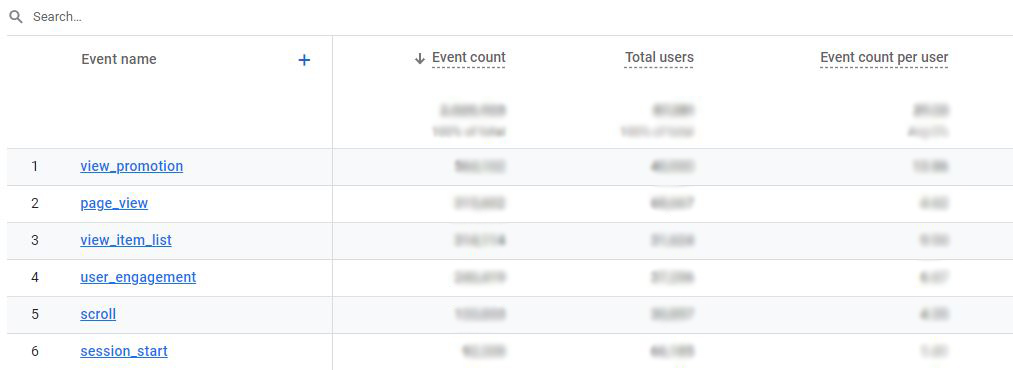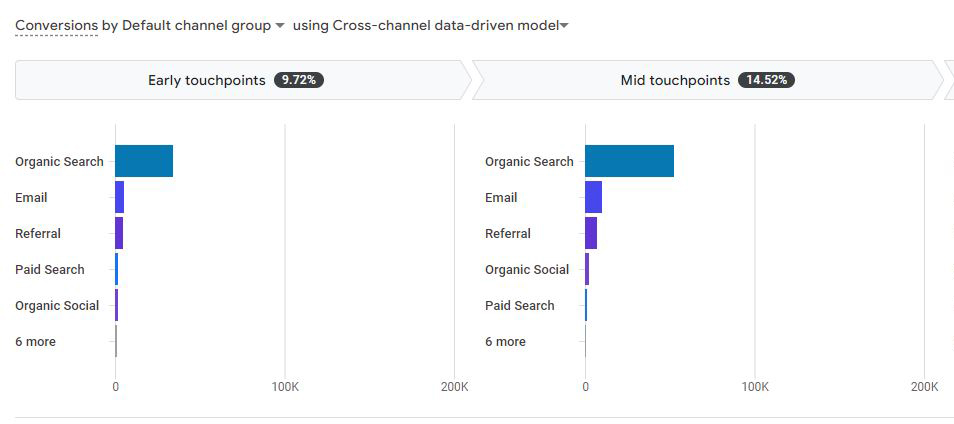Google Analytics 4 is officially live!
The popular analytics tool has introduced several improvements that are beneficial for ecommerce businesses. As usual, there are also some changes you’ll want to be aware of. For example, page views and social interactions now fall under events. You can also compare first-click and last-click models to better review campaigns.
Conversion paths have got a makeover. They’re easier to drill down to individual touchpoints. The YouTube Engaged View Conversions are also helpful for your video marketing efforts.
Getting your head around these changes can help you better utilise GA4 for your business. It can help improve customer experience and drive conversions. Find everything you need to know about these features here.
Introducing Events
To effectively manage the amount of data coming from multiple sources, Google Analytics 4 took a fresh approach. Rather than focusing on specific metrics such as page views, transactions, and social interactions, the system instead centres around a concept known as "events."

The change provides greater flexibility. Events can be customised to suit your business’s needs. It incorporates various actions such as page, screen, or app views. Additionally, event parameters can provide extra information. You can opt for a deeper analysis of metrics such as order ID, revenue, and items purchased. However, with this increased flexibility comes the need for proper planning. You’ll need to decide how to set up these events so you can make the most of the new capabilities in Google Analytics 4.
Modelled Conversions
Another one of the Google Analytics 4 changes relates to modelled conversions. It’s a feature that uses attribution categories to analyse referral traffic. It looks at the data for visits where a purchase was recorded and assigns a traffic source. But it also examines data where one can’t be allocated. These are known as non-attributed visits. Machine learning predictions are used to guess the likelihood of these browsers converting. The feature can give you an estimate of the likely impact on campaign metrics and sales conversions.
Modelled conversions address the limitations of browsers and technologies that restrict data measurement based on customer preferences. You can estimate the value of your ad traffic without violating user consent or restrictions. It’s also great if you run B2B campaigns. Often there are multiple touchpoints and a longer sales cycle. But with modelled conversions, you can identify the ones more likely to increase sales conversions.
Attribution Models
You can use attribution models to assign conversions to all the touchpoints on the customer’s journey. It could be a set of rules or a data-driven algorithm. These are:
- Data-driven attribution: Uses data to determine the most appropriate credit for each touchpoint.
- Last click attribution: Attributes 100% of the conversion to the last channel the customer clicked through before purchasing.
- Ads-preferred last click attribution: Credits the previous Google Ads channel before conversion or the last one if there isn’t a click.
- First click attribution: Credits the conversion to the first channel the customer clicked before buying.
- Linear attribution: Distributes conversion evenly across all the channels a customer clicked.
- Position-based attribution: Allocates 40% of the conversion credit to the first and last touchpoints. The other 20% goes to the middle.
- Time decay attribution: Assigns to the touchpoints that occurred closer to the purchase.
You can switch between these models and apply them retroactively. The feature allows you to ensure your attribution to each campaign is accurate and can be used for your customer journeys.
Conversion Paths
The Google Analytics 4 conversion path report has changed to provide a more user-friendly experience. It’s divided into two sections: data visualisation and data table. The data visualisation section can help you identify the most valuable paths to conversion. Touchpoints are categorised into three segments: early, mid, and last. They aim to show each channel's role in getting a buyer across the line.

You can navigate to an individual category and hover over the header to see conversion credit and the precise number of purchases. It allows for a more detailed analysis of how each section impacts your sales. You can then make changes to optimise the customer experience.
YouTube Engaged View Conversions
The popularity of video marketing is on the rise. According to Google, 70% of YouTube viewers have said they purchased from a brand after discovering it on the platform. However, these customers don’t buy something instantly. They do it after finishing a session. That’s why Google Analytics 4 has introduced Engaged View Conversions.
It considers the different behaviours people demonstrate when watching videos compared to other ads. Engaged View Conversions are counted when someone watches at least 10 seconds of a skippable in-stream ad or the entire skippable in-stream ad if it’s less than 10 seconds and then buys something within the conversion window. It provides a more accurate way of measuring your direct response video ads and engagement.
Maximising the Google Analytics 4 Changes
Understanding the Google Analytics 4 Changes can provide significant benefits to your business. From the streamlining of events to YouTube Engaged View Conversions, you’ll find a lot of valuable insights that can help improve your ecommerce business and provide greater customer experiences.
You can find more useful resources on the Google Analytics site. There are helpful guides and details about other incredible features. Make sure to register and learn more about how you can optimise your online store.
 Are you affected by the Sendle service suspension? We have an immediate shipping solution for you!
Are you affected by the Sendle service suspension? We have an immediate shipping solution for you!










 Facebook
Facebook Twitter
Twitter Instagram
Instagram Linked In
Linked In YouTube
YouTube